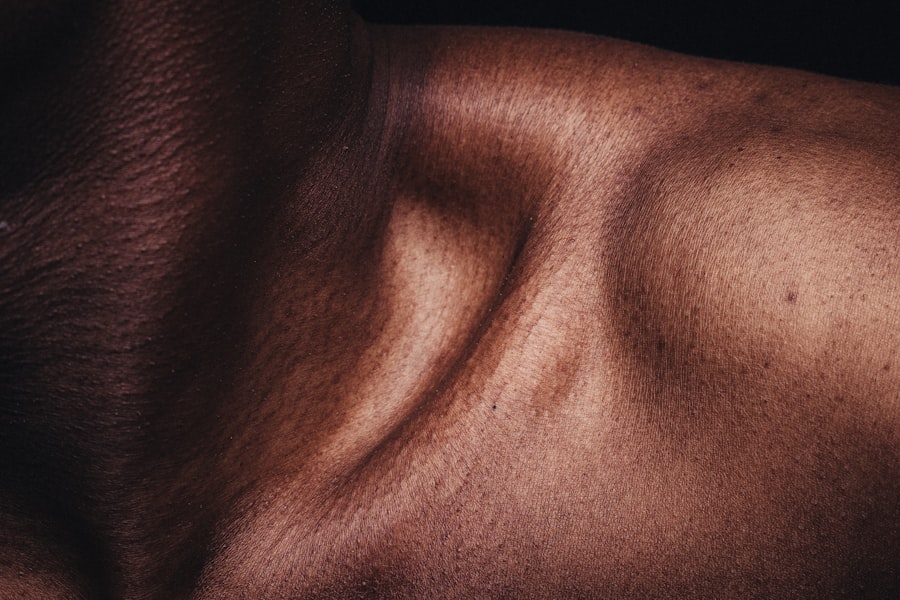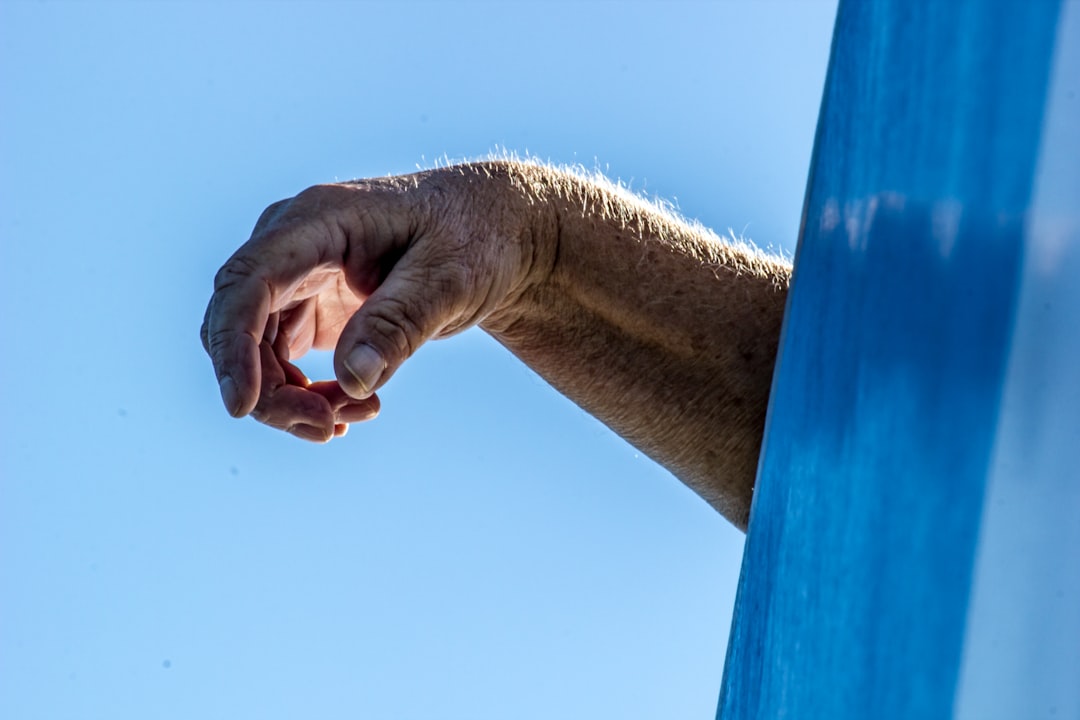Grass rash, often referred to as contact dermatitis, is a skin condition that arises when the skin comes into direct contact with certain irritants or allergens found in grass. This condition is particularly common among individuals who spend significant time outdoors, such as gardeners, athletes, and children playing in grassy areas.
In some cases, the rash may also present with blisters or weeping sores, leading to further discomfort and potential secondary infections. The underlying cause of grass rash can be attributed to various factors, including the presence of specific proteins in grass that trigger an allergic reaction. For instance, certain species of grass, such as Bermuda and Timothy grass, are known to contain allergens that can provoke a response in susceptible individuals.
Additionally, environmental factors such as humidity and temperature can exacerbate the condition, making it more prevalent during warmer months when people are more likely to engage in outdoor activities. Understanding the nature of grass rash is crucial for effective prevention and management, as it allows individuals to identify potential triggers and take appropriate measures to protect their skin.
Key Takeaways
- Grass rash, also known as contact dermatitis, is a skin irritation caused by contact with certain plants, such as grass, that release irritating substances when touched.
- Prevent grass rash by wearing long sleeves and pants when in grassy areas, using barrier creams, and washing skin and clothing after exposure to grass.
- Treat grass rash with over-the-counter hydrocortisone cream, cool compresses, and antihistamines to reduce itching and inflammation.
- Home remedies for grass rash include oatmeal baths, aloe vera gel, and calamine lotion to soothe and relieve symptoms.
- Over-the-counter medications such as antihistamines and pain relievers can help manage symptoms of grass rash, but consult a doctor for severe cases or if symptoms persist.
Prevention of Grass Rash
Preventing grass rash involves a combination of strategies aimed at minimizing skin exposure to irritants and allergens. One of the most effective methods is to wear protective clothing when engaging in outdoor activities. Long sleeves, long pants, and closed-toe shoes can create a barrier between the skin and the grass, significantly reducing the risk of developing a rash.
Additionally, individuals should consider using fabrics that are less likely to irritate the skin, such as cotton or moisture-wicking materials that help keep the skin dry. Another preventive measure is to be mindful of the environment in which one is spending time.
If outdoor activities are unavoidable, applying a barrier cream or lotion specifically designed to protect against irritants can provide an additional layer of defense. Furthermore, individuals with known sensitivities should educate themselves about the types of grass in their area and take care to avoid direct contact whenever possible.
Treatment of Grass Rash

When it comes to treating grass rash, the primary goal is to alleviate symptoms and promote healing. The first step in treatment typically involves removing any irritants from the skin. This may include washing the affected area with mild soap and cool water to eliminate any residual allergens or irritants.
After cleansing, it is essential to gently pat the skin dry rather than rubbing it, as friction can exacerbate irritation. Topical treatments play a significant role in managing grass rash symptoms. Over-the-counter hydrocortisone creams are commonly recommended for reducing inflammation and itching associated with the rash.
These creams work by suppressing the immune response in the affected area, providing relief from discomfort. In more severe cases, a healthcare provider may prescribe stronger corticosteroids or other topical medications to address persistent symptoms. Additionally, oral antihistamines can be beneficial for managing itching and preventing scratching, which can lead to further irritation or infection.
Home Remedies for Grass Rash
| Home Remedies for Grass Rash | Effectiveness | Preparation |
|---|---|---|
| Aloe Vera | High | Apply aloe vera gel directly to the affected area |
| Oatmeal | Medium | Make an oatmeal paste and apply it to the rash |
| Cold Compress | Low | Apply a cold compress to reduce itching and inflammation |
In addition to conventional treatments, many individuals seek home remedies to alleviate the discomfort associated with grass rash. One popular remedy involves using oatmeal baths, which have been shown to soothe irritated skin and reduce itching. Colloidal oatmeal can be added to a lukewarm bath, allowing individuals to soak for 15-20 minutes.
The natural properties of oatmeal help to form a protective barrier on the skin while providing anti-inflammatory benefits. Another effective home remedy is the application of aloe vera gel. Known for its soothing and healing properties, aloe vera can be applied directly to the affected area to provide relief from redness and irritation.
Its cooling effect can also help alleviate discomfort caused by itching. Additionally, chamomile tea compresses may offer relief; steeping chamomile tea bags in hot water, allowing them to cool, and then applying them to the rash can provide anti-inflammatory benefits and promote healing.
Over-the-Counter Medications for Grass Rash
For those experiencing grass rash symptoms that require more than just home remedies, over-the-counter medications can be an effective solution. Hydrocortisone cream is one of the most widely used topical treatments for mild to moderate rashes. It works by reducing inflammation and itching, making it a go-to option for many individuals dealing with contact dermatitis caused by grass exposure.
In addition to hydrocortisone cream, oral antihistamines such as diphenhydramine (Benadryl) or cetirizine (Zyrtec) can help manage itching and discomfort associated with grass rash. These medications work by blocking histamine receptors in the body, which are responsible for allergic reactions. While antihistamines can provide relief from itching, they may also cause drowsiness; therefore, individuals should use caution when taking them, especially if they need to remain alert.
When to Seek Medical Attention for Grass Rash

While many cases of grass rash can be managed at home or with over-the-counter treatments, there are instances when medical attention is necessary. If the rash persists for more than two weeks despite treatment or worsens over time, it is advisable to consult a healthcare professional. Persistent rashes may indicate an underlying infection or a more severe allergic reaction that requires specialized care.
Additionally, individuals should seek medical attention if they experience symptoms such as fever, swelling around the rash, or if the rash begins to ooze pus or develop crusting. These signs may indicate a secondary bacterial infection that necessitates antibiotic treatment. Furthermore, if an individual has a history of severe allergic reactions or anaphylaxis related to contact dermatitis, they should consult their healthcare provider promptly upon noticing any signs of a rash.
Managing Itchiness and Discomfort from Grass Rash
Managing itchiness and discomfort associated with grass rash is crucial for preventing further irritation and promoting healing. One effective strategy is to keep the affected area cool and dry. Applying cold compresses or ice packs wrapped in a cloth can provide immediate relief from itching and reduce inflammation.
It is essential to avoid applying ice directly to the skin to prevent frostbite. In addition to cold therapy, maintaining proper hydration is vital for skin health. Drinking plenty of water helps keep the skin hydrated from within, which can aid in recovery from rashes.
Furthermore, avoiding hot showers or baths is advisable since hot water can strip natural oils from the skin and exacerbate dryness and irritation. Instead, individuals should opt for lukewarm water and limit shower time to minimize further irritation.
Long-term Prevention of Grass Rash
Long-term prevention of grass rash involves adopting lifestyle changes that minimize exposure to potential allergens while promoting overall skin health. Regularly moisturizing the skin with hypoallergenic lotions can help maintain its barrier function and reduce susceptibility to irritants. Individuals who frequently engage in outdoor activities should consider applying sunscreen with broad-spectrum protection; sunburned skin is more prone to irritation from allergens.
Education plays a crucial role in long-term prevention as well. Individuals should familiarize themselves with their specific triggers and learn how to identify different types of grasses that may cause reactions. Keeping a diary of outdoor activities and any subsequent skin reactions can help pinpoint patterns and inform future decisions regarding outdoor exposure.
By taking proactive measures and being mindful of their environment, individuals can significantly reduce their risk of developing grass rash over time.
If you have ever experienced a grass rash, you may be interested in learning more about the science behind different types of skin reactions. One article that delves into the topic of understanding dynamical systems, types, and examples, may provide insight into how our bodies react to different stimuli. To read more about this fascinating subject, check out this article.
FAQs
What is a grass rash?
A grass rash, also known as contact dermatitis, is a skin irritation or rash that occurs after coming into contact with certain plants, such as grasses, weeds, or other foliage.
What causes a grass rash?
A grass rash is caused by the skin coming into contact with the oils or sap of certain plants. These plants can contain irritants or allergens that cause an allergic reaction or irritation in some individuals.
What are the symptoms of a grass rash?
Symptoms of a grass rash can include redness, itching, swelling, and sometimes blistering of the skin. In more severe cases, the rash may be accompanied by pain or a burning sensation.
How can a grass rash be treated?
Treatment for a grass rash may include over-the-counter or prescription topical corticosteroids to reduce inflammation and itching. Cool compresses, oatmeal baths, and antihistamines may also provide relief.
How can a grass rash be prevented?
To prevent a grass rash, individuals can wear long sleeves and pants when working or playing in grassy areas, and use barrier creams or lotions to protect the skin. It’s also important to wash the skin thoroughly after coming into contact with plants.
























+ There are no comments
Add yours